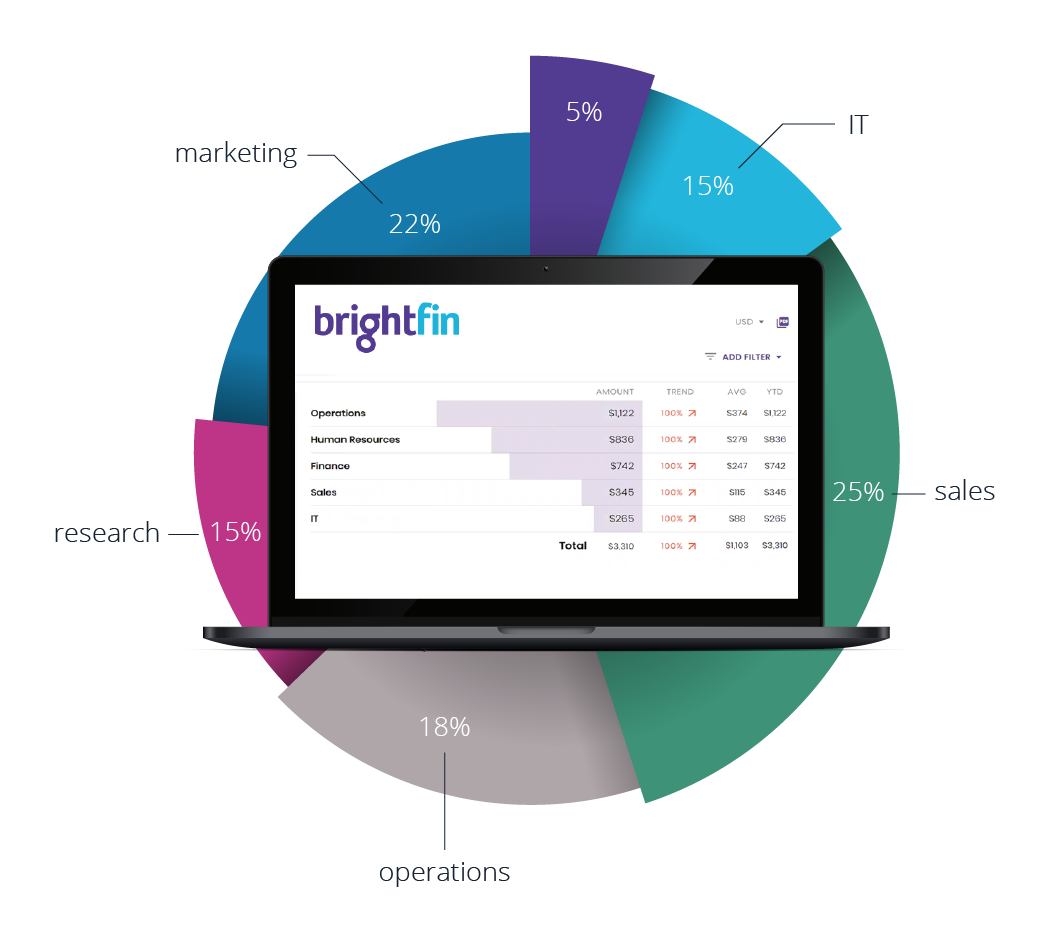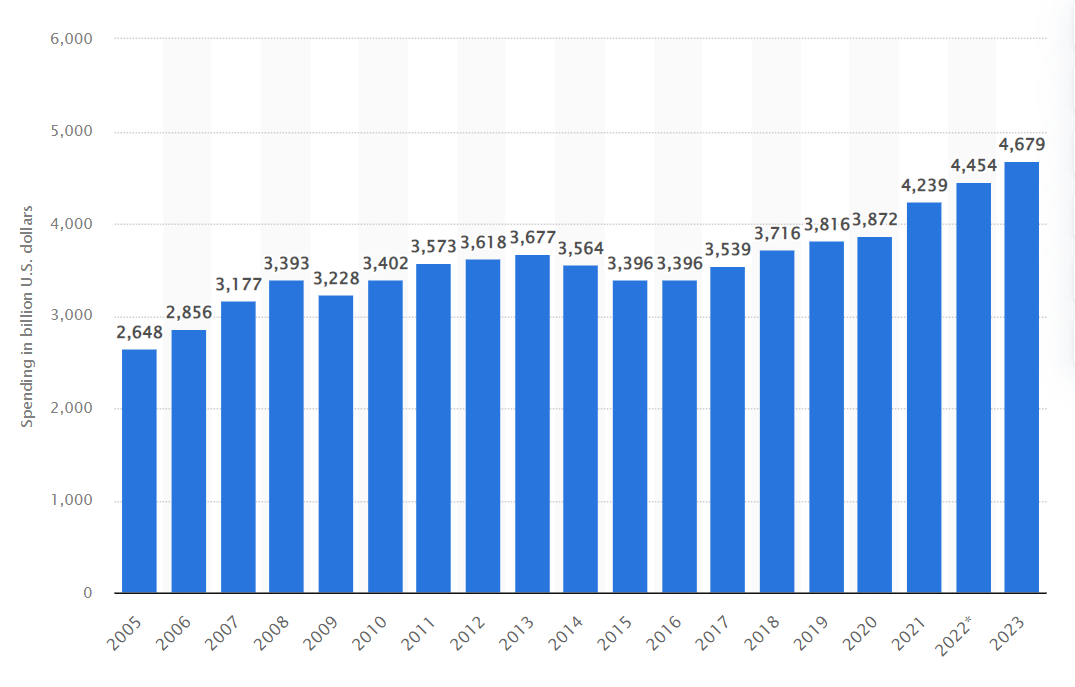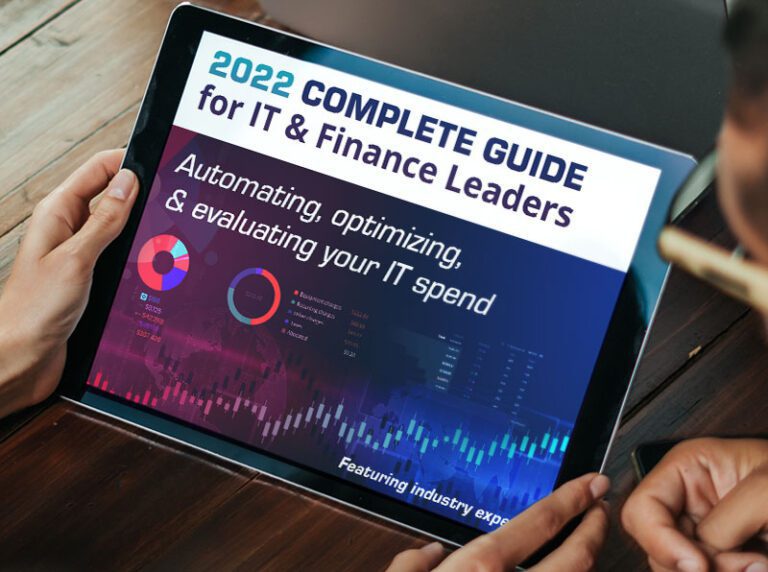Introduction to IT finance planning
Companies’ technology spending continues to skyrocket as they deploy mobile phones, tablets, IoT devices, project management software, virtual meeting subscriptions, and more. But organizations often lack a clear understanding of the value of IT. They may have visibility of overall IT spending or operational data about IT usage. But how do you demonstrate the value IT provides? And how do you align IT investments to business strategy?
IT often has one of the largest budgets in an organization and IT leaders must prove their value to the business. IT finance planning allows IT to align with Finance and the overall business goals by giving transparency of IT expenses. This moves IT budgeting from just an annual goal to a process that supports overall business strategy. The opportunity for IT Leadership is to take the business strategy and build their IT finance plan to support it
IT finance planning in 4 Steps
We often find IT expenses that do not align with corporate objectives. In those cases, there is almost always a disconnect between IT and the business. Often, the business is asking for new projects and applications that IT needs to manage while the IT budget barely covers the operational needs just to keep the lights on. IT and Finance professionals need the ability to make informed budgeting decisions based on accurate cost allocations that improve efficiencies, reduce spending, and provide deep insights that maximize technology investments.
- Review IT investments across the organization
- Shift from keeping the lights on to fueling innovation
- Align IT spend with projects and business units that move the needle
- Track your progress
Strategic IT finance plans need KPIs that show a clear understanding and ability to support the business strategy. These aren’t simply operational measures, they are proof points that IT is delivering value across the entire organization. Measuring these metrics for success fall into four main steps which we cover below.
1. Review IT investments across the organization
With the growing complexity of technology, many organizations are challenged with a growing list of IT assets and services that must be managed. This can be anything from a new cellphone plan to standing up an entirely new location. Each of those investments creates associated IT-related invoices that contain critical data for IT leaders. IT leaders can use that IT invoice data from across the organization to understand where spending is occurring.
The challenge is that IT costs are often scattered in multiple systems. Further, these various systems often measure costs in different ways based on the category they fall under. In order to solve these challenges, organizations need to understand where their spending is going vs. the plan they have in place. IT leaders need a centralized system to view their expenses across multiple categories, such as mobile, fixed telecom, and cloud.
Essential metrics for strategic IT finance planning:
- IT spend vs. plan
- IT spend by business unit
- IT investment by business initiative
2. Shift from keeping the lights on to fueling innovation
Once you have a solid understanding of total IT-related investments and expenses, you can then make the shift to fueling innovation. The key here is to understand IT’s value beyond just keeping the lights on. As organizations deploy more and more technology, it is almost always with one goal in mind; drive a better customer experience. For different teams across the organization, this will mean very different things. Employees managing job sites may use a tablet to track projects, a salesperson on the road may rely on their smartphone, marketing may utilize multiple software licenses, the list only goes on. As the list of technologies continues to grow, the goal should be to focus on spending that drives a better customer experience.
Essential innovation metrics for IT finance:
- IT investment on running vs. growing the business
- Spend on customer-facing innovation

3. Align IT spend with projects and technology that move the needle
By utilizing the data available in IT-related invoices, IT leaders have a great opportunity to deliver more value to the organization than ever before. When IT leaders have clear visibility of spending across the organization, they can help identify where spending is occurring and direct resources toward critical projects. A great example is our customer Volkswagen which requires that a percentage of all IT spending is directed toward transforming the business versus maintaining processes. Equally, CIOs must align IT spending to the projects and business units that move the needle on revenue.
Organizations also need to provide visibility for Finance leaders to allocate charges correctly across the company. Ideally, these reports should work across multiple stakeholder views. Business leaders often need to see the same data displayed in very different ways. Financial leaders are concerned with CapEx versus OpEx – labor, facilities, hardware, etc. IT leaders break costs out by towers such as application, compute, data center, and more. By bringing these views together, IT and Finance leaders can create operational plans that stay on budget. They will then have the financial resources for the strategic plan to succeed.
Essential technology investment metrics:
- Infrastructure technology costs
- Application and service costs
- End-user and customer satisfaction scores
IT spending graph from Statista

4. Track your progress
No plan is complete without the ability to track progress. Your IT plan should include ongoing reviews of project outcomes and expected delivery dates. After all, IT metrics can only do their job when IT decision-makers pay attention to them. Delivery metrics allow your organization to track project execution and the ongoing delivery of services. These metrics may include satisfaction surveys, budget and completion measurements, and data that influence labor and resourcing allocation.
SLAs demonstrate how frequently your IT services are being delivered on time. This can be critical for IT leaders to understand what the end-user experience is. The goal here is to develop an accurate operational picture so that IT can deliver services in a timely manner. If the SLAs are off, the operational budget is off, and the overall strategy may be at risk. Establishing a regular cadence of metrics reviews for different audiences and aspects of IT performance provides a way for leaders across the organization to stay aligned on overall progress.
Essential metrics for tracking your progress:
- % of projects on time and on budget
- % of IT services meeting SLAs
Benefits of strategic IT finance planning
- Better alignment – At the end of the day, creating an effective IT finance plan requires alignment across the organization. IT and Finance leaders can better drive overall strategy when they are on the same page.
- Communicate IT’s value – IT and Finance leaders can use the essential KPIs to connect the strategic plan to the business strategy, allowing them to communicate IT’s value to the wider organization.
- Centralize dashboard views – By building an IT finance plan inside a single system, stakeholders from across the business will have visibility and insight of IT spending.
- Future proof IT investments – Because the rate of technology continues to increase, IT and Finance leaders need to ensure that they have ongoing alignment across the organization. This will help drive results as new technologies come to market.






